A Step-by-Step Guide to Creating Stunning DIY Terrariums with Succulents
Wouldn’t it be great to have a miniature indoor garden that’s as elegant as it is low-maintenance. Well, welcome to the world of terrariums, where succulents and glass bowls come together to create a breathtakingly beautiful, self-sustaining ecosystem. In this article, we’ll show you how to craft your own mesmerizing DIY terrariums that will bring a touch of serenity to any room.
Terrariums have gained immense popularity in recent years due to their numerous benefits. Not only are they low-maintenance and space-saving, but they also have the ability to purify the air and create a sense of tranquility in any room. Succulents, with their unique shapes and low-growing varieties, are the perfect plants to use in terrariums. With a few simple materials and some basic instructions, you can create your own stunning terrariums at home.
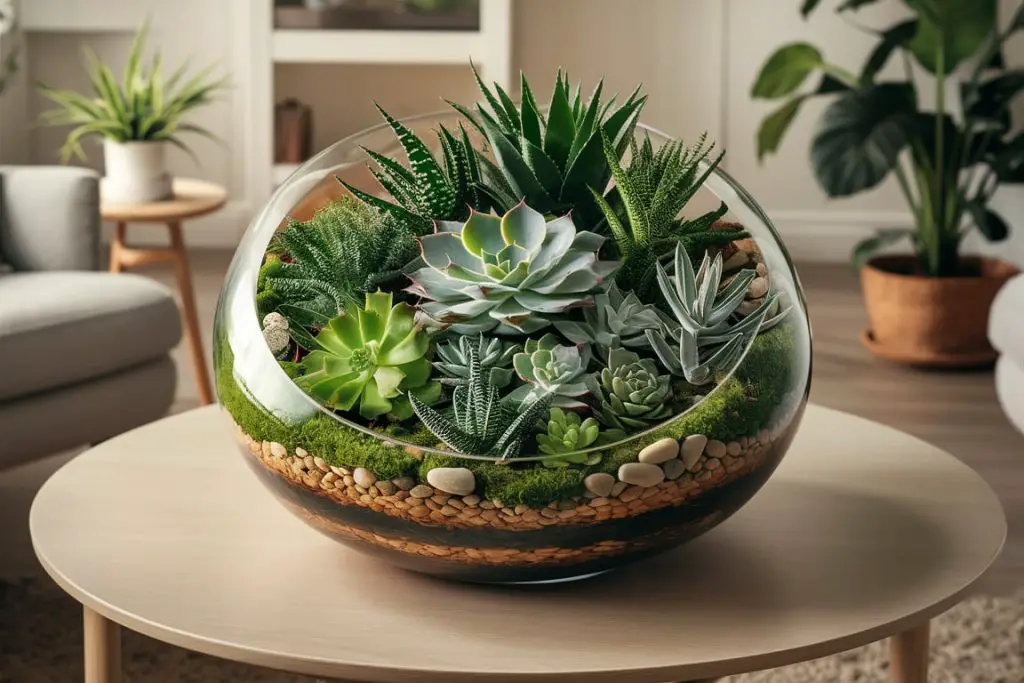
Materials and Supplies
To create a beautiful and thriving terrarium, you’ll need the following materials:
- Glass bowls or containers: Choose a glass bowl that is clear and has a wide mouth to allow for easy access and maintenance.
- Succulents: Select low-growing varieties of succulents that are suitable for terrariums. Some popular options include aloe, echeveria, and crassula.
- Soil specifically designed for cacti and succulents: This type of soil is well-draining and will help prevent waterlogged soil.
- Pebbles or small rocks: These will be used for drainage and to prevent the soil from washing away.
- Activated charcoal (optional): Activated charcoal can help prevent mold and mildew from growing in the terrarium.
- Mistifier or spray bottle: This will be used to water and maintain the terrarium.
When choosing your materials and supplies, it’s essential to select high-quality products that will help your terrarium thrive. Avoid using regular potting soil, as it can retain too much water and cause the roots of the succulents to rot.
Step-by-Step Terrarium Creation
Creating a terrarium is a relatively simple process that requires some basic materials and a bit of patience. Here’s a step-by-step guide to help you get started:
Step 1: Prepare the Container
Start by cleaning and drying the glass bowl thoroughly. This will help prevent any dirt or debris from contaminating the soil and succulents. Next, add a layer of small rocks or pebbles to the bottom of the bowl. This will help with drainage and prevent the soil from washing away.
Step 2: Add a Layer of Activated Charcoal (optional)
If you’re using activated charcoal, add a thin layer on top of the rocks or pebbles. Activated charcoal can help prevent mold and mildew from growing in the terrarium by absorbing excess moisture. However, it’s not essential, and you can skip this step if you don’t have activated charcoal.
Step 3: Add the Soil
Fill the container about 2/3 with soil specifically designed for cacti and succulents. This type of soil is well-draining and will help prevent waterlogged soil. Make sure to leave enough space for the succulents’ roots to grow.
Step 4: Plant the Succulents
Choose the right succulent variety for your terrarium and gently remove it from its pot. Plant the succulent in the soil, leaving enough space for growth. Make sure the soil is firmly packed around the roots to prevent them from washing away.
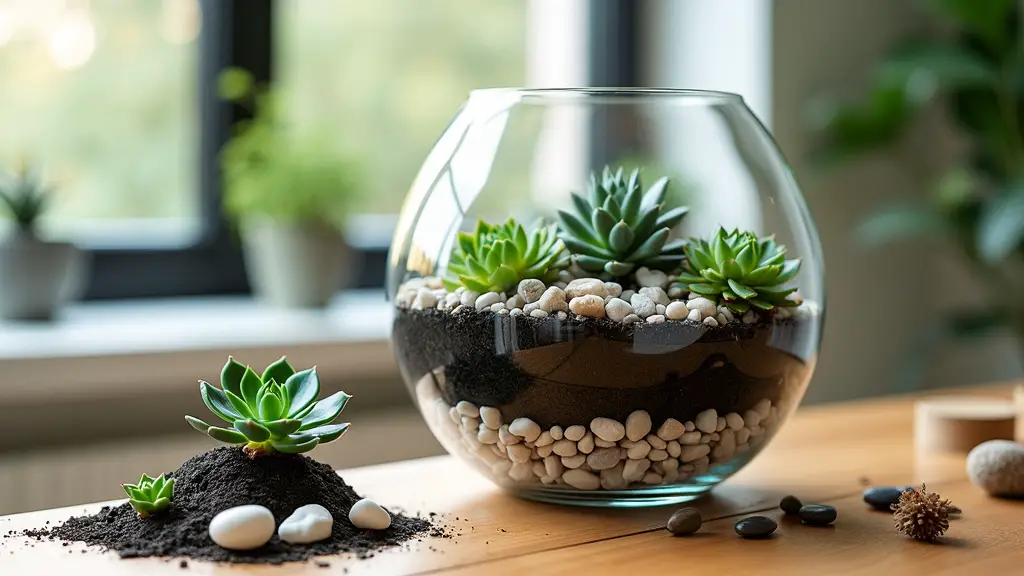
Step 5: Add Decorative Elements (optional)
If you want to add some extra flair to your terrarium, now is the time to do it. You can use decorative rocks, moss, or other embellishments to create a unique and personalized design.
Tips and Tricks for Succulent Terrarium Care
To keep your terrarium thriving, it’s essential to provide the right conditions. Here are some tips and tricks to help you care for your succulent terrarium:
Proper Lighting and Temperature
Creating the ideal environment for your succulent terrarium is crucial for its health and longevity. Here’s a detailed guide on how to manage lighting and temperature effectively:
1. Lighting Requirements
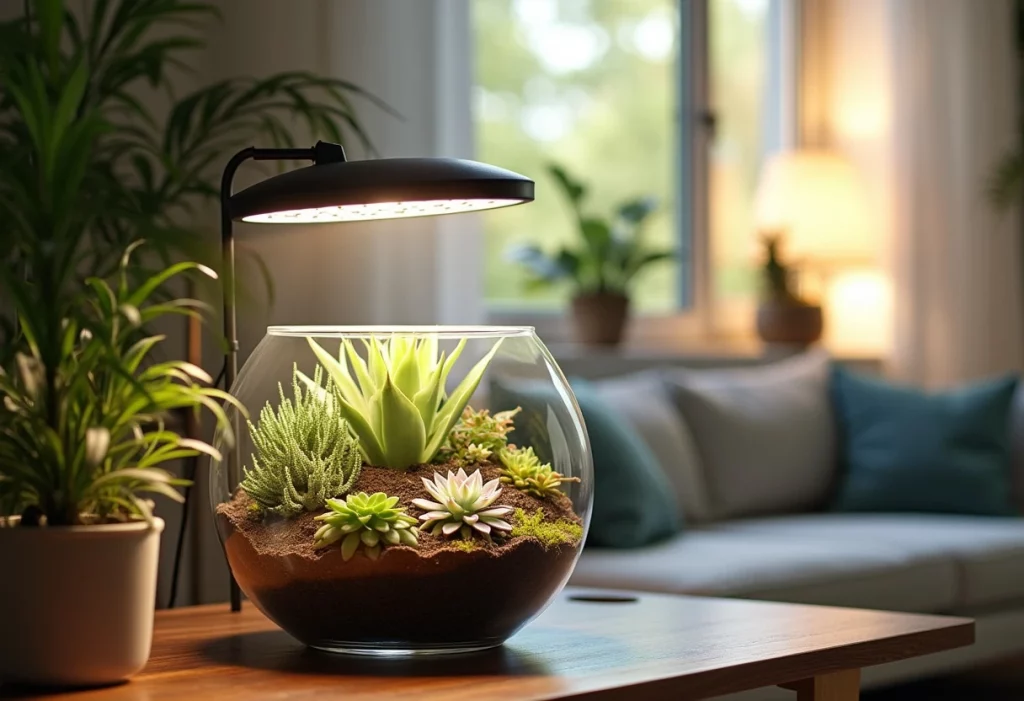
Bright, Indirect Light:
- Ideal Location: Place your terrarium in a spot where it receives bright, indirect sunlight. A north-facing window or a few feet away from a south-facing window is usually perfect.
- Avoid Direct Sunlight: Direct sunlight can cause the glass to magnify the sun’s rays, leading to overheating and potential damage to the succulents. If you notice the leaves turning brown or yellow, it’s a sign that they are receiving too much direct sunlight.
Supplemental Lighting:
- Grow Lights: If natural light is insufficient, consider using grow lights. LED grow lights are energy-efficient and provide the right spectrum of light for plant growth. Position the lights about 6-12 inches above the terrarium and keep them on for 10-12 hours per day.
Seasonal Adjustments:
- Winter Care: During the winter months, when daylight is shorter, you may need to increase the use of grow lights to ensure your succulents receive adequate light. Monitor the plants closely and adjust the light duration as needed.
2. Temperature Management
Optimal Temperature Range:
- Indoor Temperatures: Most succulents thrive in temperatures between 60°F and 80°F (15°C to 27°C). This range mimics their natural habitat and promotes healthy growth.
- Avoid Extreme Temperatures: Keep your terrarium away from heat sources like radiators, fireplaces, and air conditioning units. Sudden temperature changes can stress the plants and affect their health.
Nighttime Temperatures:
- Cooler Nights: Many succulents benefit from slightly cooler nighttime temperatures, ideally around 55°F to 65°F (13°C to 18°C). This temperature drop helps the plants rest and can encourage blooming.
Humidity Considerations:
- Moderate Humidity: While succulents generally prefer lower humidity levels, the enclosed environment of a terrarium naturally maintains a higher humidity. This is beneficial as long as you avoid overwatering, which can lead to root rot.
- Ventilation: If you notice condensation forming inside the terrarium, it might be a sign of excessive humidity. Open the container slightly to allow for air circulation and reduce moisture buildup.
Seasonal Adjustments:
- Summer Care: During hot summer months, monitor the temperature inside the terrarium to ensure it doesn’t exceed 85°F (29°C). If necessary, move the terrarium to a cooler part of the room or use a fan to improve air circulation.
- Winter Care: In colder months, protect your terrarium from drafts and cold windows. If your home is particularly dry, you may need to mist the plants occasionally to maintain a moderate humidity level.
By carefully managing the lighting and temperature conditions, you can create an optimal environment for your succulent terrarium. This will not only keep your plants healthy but also enhance their overall appearance, making your glassy oasis a true centerpiece in your home.
- Lighting: Most succulents prefer bright, indirect light. Place your terrarium near a sunny window or use grow lights to provide the necessary light.
- Temperature: Succulents prefer temperatures between 65-75°F (18-24°C). Avoid placing your terrarium near heating or cooling vents.
- Watering: Water your terrarium sparingly, as succulents are prone to overwatering. Use a mistifier or spray bottle to water the soil and succulents.
- Humidity: Succulents prefer dry air, so it’s essential to maintain low humidity levels. Avoid placing your terrarium in humid areas, such as bathrooms or kitchens.
- Fertilization: Feed your succulents with a balanced fertilizer during the growing season (spring and summer).
Design Variations and Inspiration
Terrariums are incredibly versatile, and you can create a wide range of designs to suit your personal style. Here are some design variations and inspiration to get you started:
Minimalist:

Create a simple and elegant design by using a single type of succulent and a clear glass bowl. This style is perfect for those who prefer a clean and uncluttered look. You can add a few decorative rocks or pebbles to the soil for added texture and interest.
Desert-inspired:
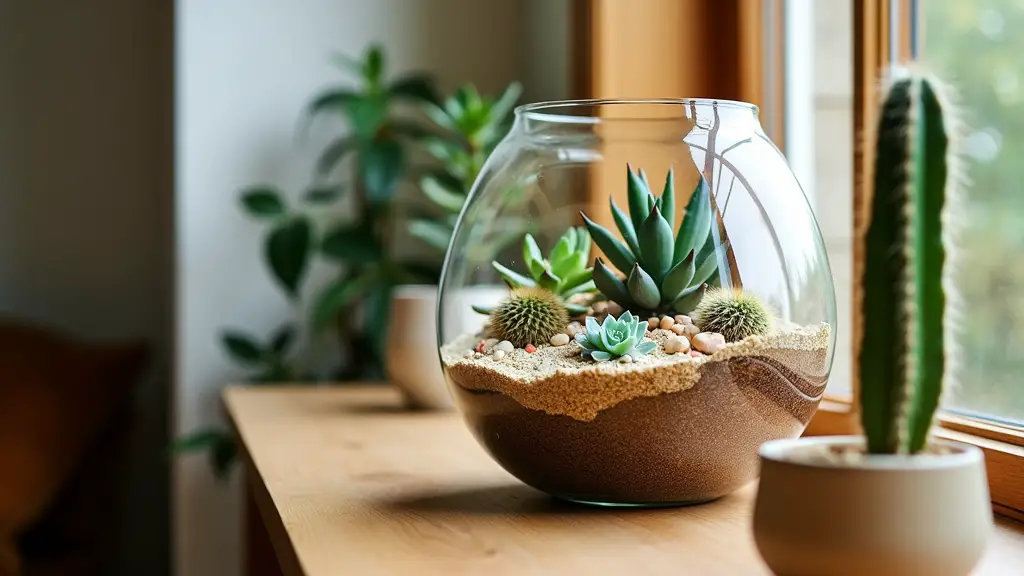
Use a variety of succulents and add decorative rocks and sand to create a desert-inspired design. This style is perfect for those who love the desert landscape and want to bring a piece of it into their home. You can also add some small cacti or other desert plants to create a more dramatic effect.
Modern:
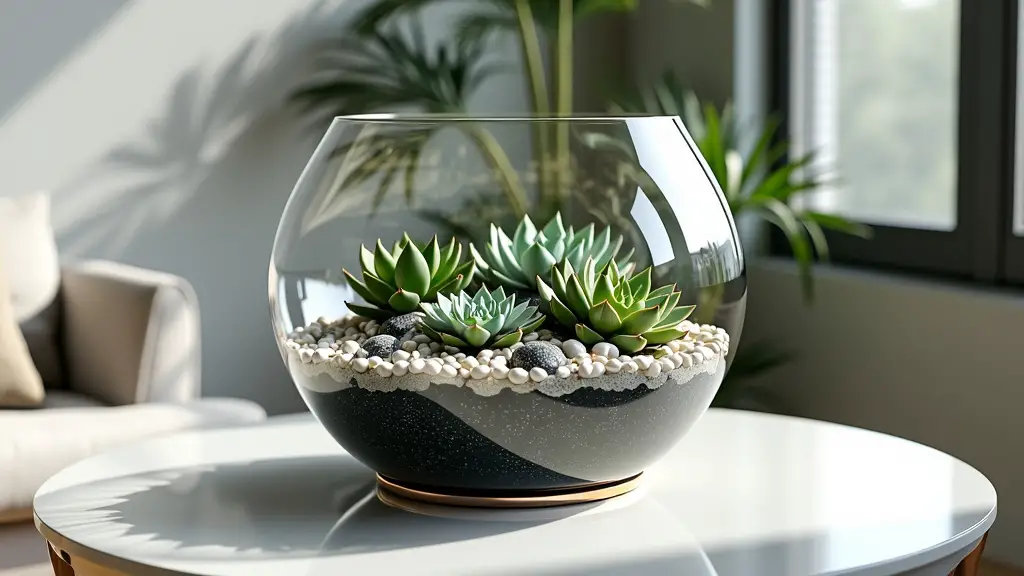
Use a sleek glass bowl and add modern decorative elements, such as glass pebbles or metallic accents. This style is perfect for those who prefer a contemporary look and want to add a touch of sophistication to their space. You can also use a variety of succulents with different shapes and textures to create a visually interesting design.
Whimsical:

Create a whimsical design by using a variety of succulents and adding decorative elements, such as small figurines, seashells, or other trinkets. This style is perfect for those who want to add a touch of personality to their space and create a unique and playful design.
Nature-inspired:
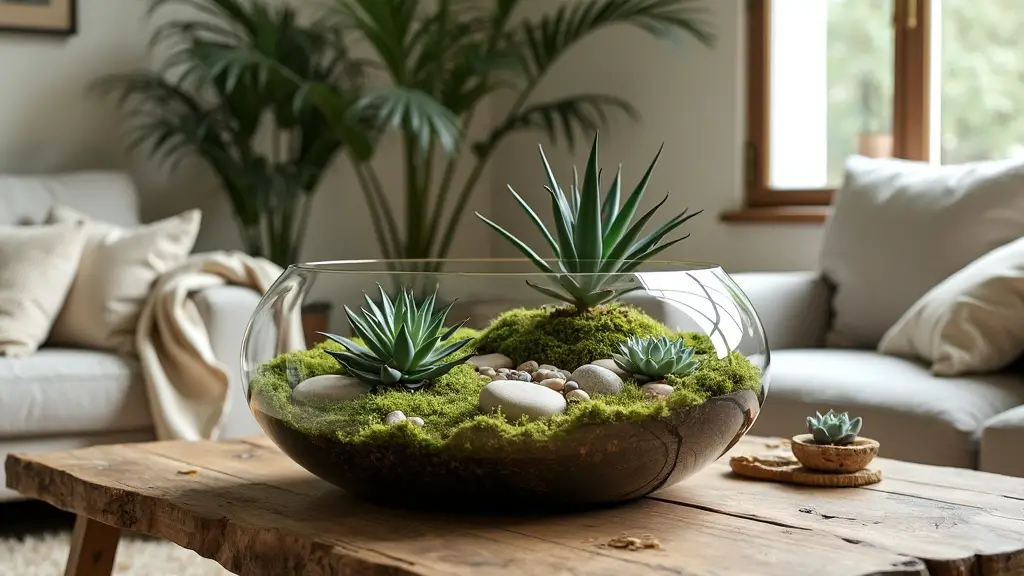
Use natural elements, such as driftwood, pinecones, or moss, to create a nature-inspired design. This style is perfect for those who love the outdoors and want to bring a piece of nature into their home. You can also use a variety of succulents with different shapes and textures to create a visually interesting design.
Geometric:
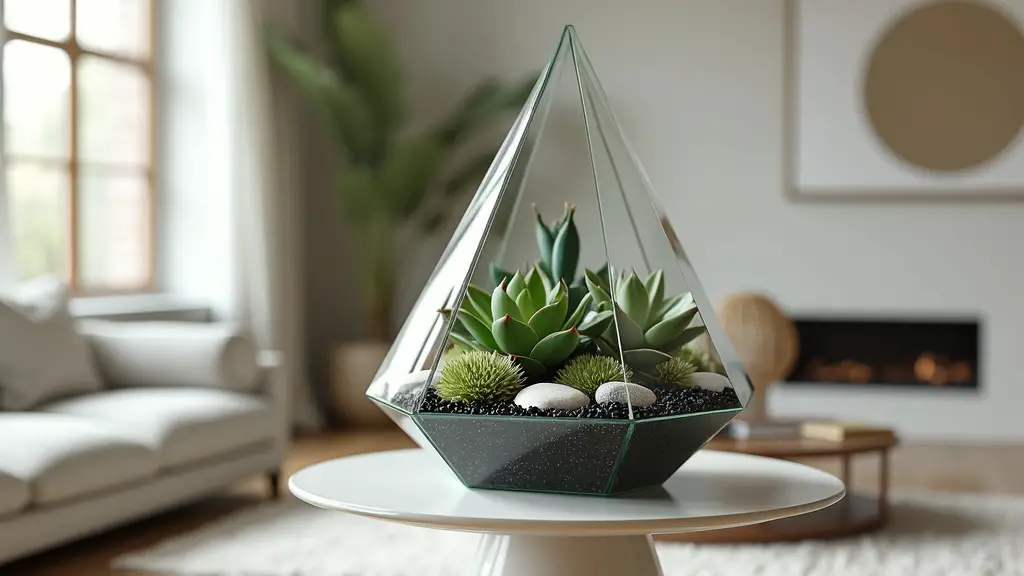
Use a geometric-shaped glass bowl and add decorative elements, such as glass pebbles or small rocks, to create a geometric design. This style is perfect for those who prefer a modern and sleek look and want to add a touch of sophistication to their space.
Vintage:
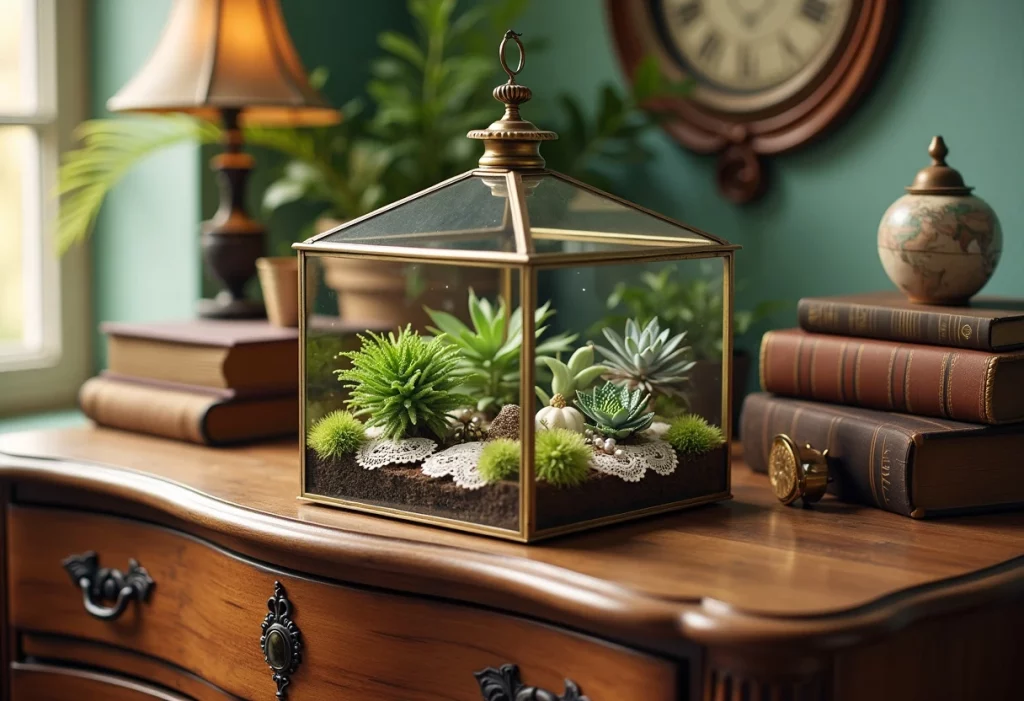
Create a vintage-inspired design by using an antique glass bowl and adding decorative elements, such as lace, ribbons, or other vintage trinkets. This style is perfect for those who love vintage items and want to add a touch of nostalgia to their space.
Layered Soil and Sand Terrarium:
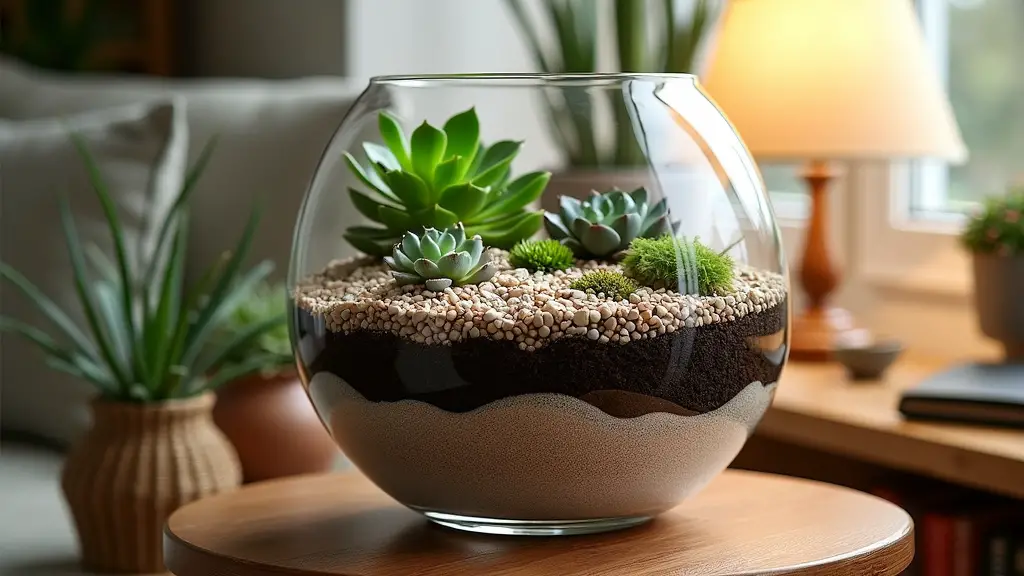
A focus on the layered effect within the terrarium – alternating layers of soil, pebbles, and sand to add depth and visual interest, while also supporting the succulents growing on top.
Eclectic Mix of Succulents in Terrarium:
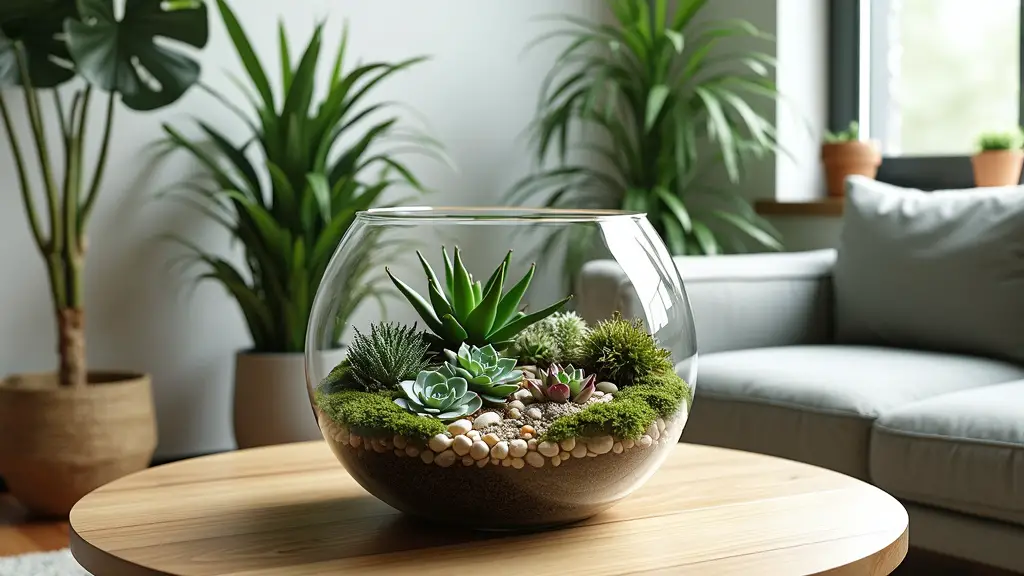
A diverse terrarium design with an array of different succulent species, each with distinct shapes and colors, planted together to showcase the variety and vibrant visual appeal of succulents.
Terrarium Trio with Varied Themes:
A display of three small terrariums side by side, each representing different themes – one minimalist, one desert-inspired, and one whimsical – to showcase the range of styles and inspire diverse DIY designs.
Tips for Creating Unique Designs
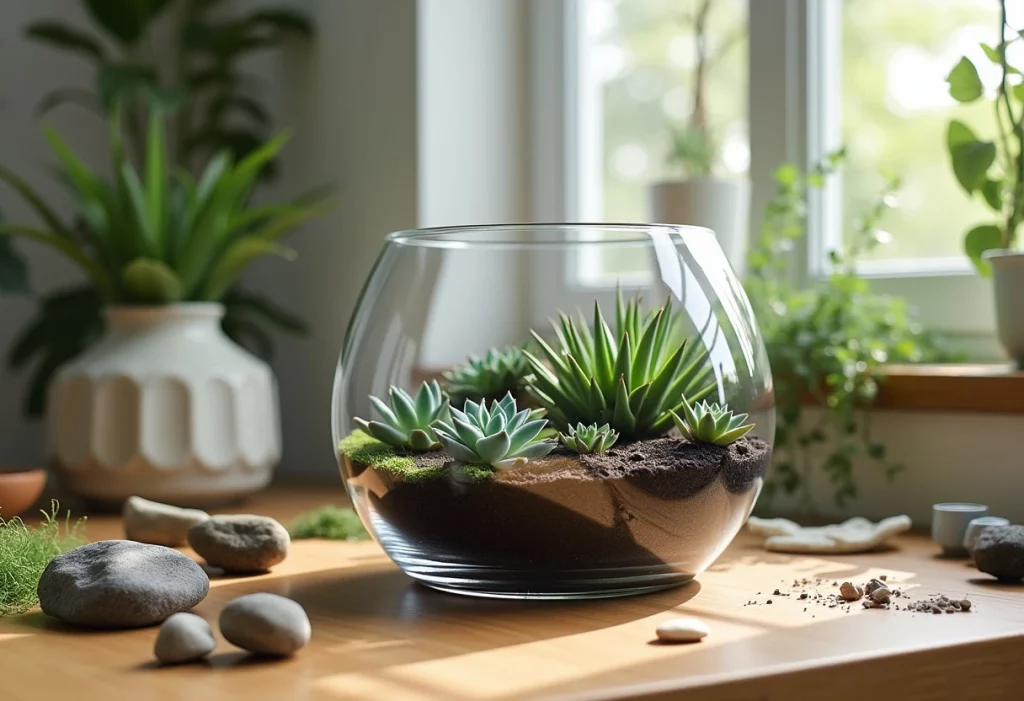
- Experiment with different shapes and sizes: Use glass bowls or containers of different shapes and sizes to create a unique and visually interesting design.
- Mix and match succulents: Use a variety of succulents with different shapes, textures, and colors to create a visually interesting design.
- Add decorative elements: Use decorative elements, such as rocks, pebbles, or small trinkets, to add texture and interest to your design.
- Play with lighting: Use different lighting effects, such as string lights or fairy lights, to create a unique and dramatic effect.
- Get creative with materials: Use unconventional materials, such as old jars, bottles, or containers, to create a unique and eco-friendly design.
Inspiration from Nature
- Desert landscapes: Use the desert landscape as inspiration for your design, with its unique rock formations, cacti, and succulents.
- Forest floors: Use the forest floor as inspiration for your design, with its rich soil, moss, and ferns.
- Beach scenes: Use the beach as inspiration for your design, with its shells, pebbles, and driftwood.
- Mountain landscapes: Use the mountain landscape as inspiration for your design, with its rugged rocks, moss, and wildflowers.
By experimenting with different designs and styles, you can create a unique and personalized terrarium that reflects your personality and adds a touch of beauty to your space.
Final Thoughts
Creating a stunning DIY terrarium with succulents is a fun and rewarding project that can add a touch of serenity to any room. With the right materials and supplies, you can craft a beautiful and thriving terrarium that will bring joy and tranquility to your space. Remember to provide the right conditions, and don’t be afraid to experiment with different designs and styles. Happy crafting!
